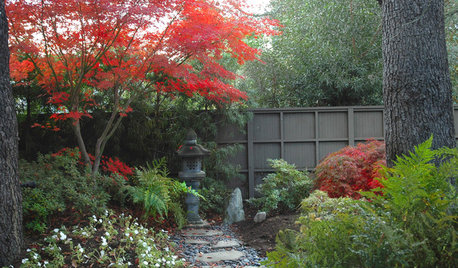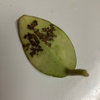On Natural Variation in Hoyas
mdahms1979
12 years ago
Related Stories

COLORNature’s Color Wisdom: Lessons on Red From the Great Outdoors
Dab some of Mother Nature’s rouge around the home for an eye-opening look
Full Story
COLORNature’s Color Wisdom: Lessons on White From the Great Outdoors
Blizzard fierce or butter soft, white can highlight shapes, unify a room and perform miracles on the cheap
Full Story
HEALTHY HOMENatural Beds: How to Shop for a Greener Mattress
Before bouncing from store to store, start here to find the right chemical-free mattress for you
Full Story
REMODELING GUIDESBoost Your Energy With Natural Light
Abundant natural light saves electrical energy and can lower energy bills, but the best benefit may be to your own energy and spirit
Full Story
KITCHEN DESIGNWood Range Hoods Naturally Fit Kitchen Style
Bring warmth and beauty into the heart of your home with a range hood crafted from nature's bounty
Full Story
REMODELING GUIDESCork Flooring 101: Warm Up to a Natural Wonder
Comfortable, sustainable and easy on the eye, cork has a lot going for it. Use our guide to get familiar with this natural flooring material
Full Story
ROOFSNo Substitute for the Natural Beauty of Wooden Roof Shingles and Shakes
This natural, renewable roof option brings weathered character and nostalgic appeal to traditional-style homes
Full Story
HOLIDAYSChristmas Cleanup Tips for the Not Naturally Organized
Dreading the postholiday chores? First let yourself unwind. Then grab some boxes, a few supplies and this easy guide
Full Story
BATHROOM DESIGNBathroom Workbook: 7 Natural Stones With Enduring Beauty
Not everyone wants a marble bath. Bring organic warmth to counters, walls or floors with these hard-wearing alternatives
Full Story
CURB APPEALModern Materials: Copper, Architecture's Natural Beauty
The rich patina is just the beginning — copper for home exteriors is strong, shapable and highly recyclable
Full StoryMore Discussions







RainforestGuy
mdahms1979Original Author
Related Professionals
Horsham Landscape Architects & Landscape Designers · Richmond Heights Landscape Architects & Landscape Designers · Stamford Landscape Contractors · Estelle Landscape Contractors · Fairhope Landscape Contractors · Huntley Landscape Contractors · Mastic Beach Landscape Contractors · Methuen Landscape Contractors · North Potomac Landscape Contractors · Palos Verdes Estates Landscape Contractors · Uxbridge Landscape Contractors · Vermilion Landscape Contractors · Waipahu Landscape Contractors · West Haverstraw Landscape Contractors · Conroe Driveway Installation & Maintenance